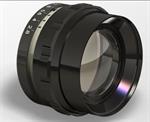 Work in the Photographic Industry
Work in the Photographic Industry
Learn to find a Niche for yourself
- Learn to take photos
- Learn all about Photographic equipment
- Learn Management, business and communication skills
- Start a photo business, or work in a photo shop, in education, media or photo industry services
This course focuses 50% of your study on developing photographic skills and knowledge; and 50% on management and business skills and knowledge.
It is an ideal balance of learning for anyone working or hoping to work in the photographic industry; whether running their own business or as a manager or supervisor for someone else in a photographic enterprise.
CORE UNITS Click on each module for more details
Office Practices
Develops basic office skills covering use of equipment, communication systems (telephone, fax, etc) and office procedures such as filing, security, workplace organisations, etc.
Business Operations
Develops knowledge of basic business operations and procedures (eg. types of businesses, financial management, business analysis, staffing, productivity, etc) and the skills to develop a 12 month business plan.
Management
Develops knowledge of management structures, terminology, supervision, recruitment and workplace health and safety.
Marketing Foundations.
Develops a broad understanding of marketing and specific skills in writing advertisements, undertaking market research, developing an appropriate marketing plan and selling.
 STREAM STUDIES
STREAM STUDIES
PHOTOGRAPHY INTRODUCTION STAGE 1
- Origins of Photography
- Film
- Photo Equipment: Part 1
- Photo Equipment: Part 2
- Developing Film
- Enlarging
- Lighting
- Fault Finding
PHOTOGRAPHIC PRACTICE STAGE 2
- Composition
- Photographing People
- Nature & Landscape Photography
- Colour vs. Black & White
- Special Techniques
- Illustrative Photography
- Publishing
- Business Opportunities in Photography
PHOTOGRAPHIC TECHNOLOGY STAGE 3
- Image Formatting
- Lighting
- Sensitometry Part 1.
- Sensitometry Part 2.
- Understanding Colour
- Chemistry of Colour Photography
- Filters & Attachments
- Lenses
EXAMS

Seven exams need to be sat -one for each of the above modules. There is generally no exam for the workplace project.
Note: Enrolment fees do not include exam fees (x 7). An exam fee is paid when each exam is sat.
Final Requirement:
200 hrs work experience or a workplace project of similar duration.
Here are two options available to you to satisfy this requirement:
Alternative 1.
If you work in the industry that you have been studying; you may submit a reference from your employer, in an effort to satisfy this industry (ie. workplace project) requirement; on the basis of RPL (ie. recognition for prior learning), achieved through your current and past work experience.
The reference must indicate that you have skills and an awareness of your industry, which is sufficient for you to work in a position of responsibility.
Alternative 2.
If you do not work in the relevant industry, you need to undertake a project as follows.
Procedure for a Workplace Project
 This project is a major part of the course involving the number of hours relevant to the course (see above). Although the course does not contain mandatory work requirements, work experience is seen as highly desirable.
This project is a major part of the course involving the number of hours relevant to the course (see above). Although the course does not contain mandatory work requirements, work experience is seen as highly desirable.
This project is based on applications in the work place and specifically aims to provide the student with the opportunity to apply and integrate skills and knowledge developed through various areas of formal study.
Students will design this project in consultation with a tutor to involve industry based activities in the area of specialized study which they select to follow in the course. The project outcomes may take the form of a written report, folio, visuals or a mixture of forms. Participants with relevant, current or past work experience will be given exemption from this project if they can provide suitable references from employers that show they have already fulfilled the requirements of this project.
For courses that involve more than 100 hours, more than one workplace project topic may be selected. For example, 200 hours may be split into two projects each of 100 hours. This will offer the student better scope to fulfill the needs of their course and to meet the number of hours required. Alternatively, the student may wish to do one large project with a duration of 200 hours.
Students will be assessed on how well they achieve the goals and outcomes they originally set as part of their negotiations with their tutor. During each 100 hours of the project, the students will present three short progress reports. These progress reports will be taken into account when evaluating the final submission. The tutor must be satisfied that the work submitted is original.
If the student wishes to do one large 200 hour report, then only three progressive reports will be needed (however the length of each report will be longer).
HOW TO IMPROVE A DIGITAL PHOTOGRAPH
When working with digital images, most faults with the actual photograph can usually be rectified to a certain extent within a photo editing software. This can be quite simple if you are just making quick changes, however can be quite time consuming if it requires a lot of work.
It can be easy, when working with digital, to just snap the photo and worry about the exposures and detail later on the computer. However, it is good to learn how to take impressive photographs using the quality of digital and using the correct exposures, whilst making full use of your lenses. It is also important to remember that the more post-shooting corrections you make, the more quality to your image may be lost.

Editing Digital Faults
It is good to get into practice of using lenses and zoom to frame your subjects within photographs, however, if we do find unwanted areas within photos, or want to create more of a feel to the subject we can just crop in to the image.
If you have overexposed, or underexposed, a digital image it is relatively easy to fix. We can simply alter this with the brightness and contrast tool, or if you are using Photoshop then you can also adjust the levels and the curves. When you are altering the levels and curves it should appear as a graph, you will need to move the markers at the base of the graph to correct these levels. Both are relatively easy ways to correct exposures.
Your image may be noisy, like grain in film images, this is accentuated by using a high ISO. The higher the ISO, the noisier the photograph will be. Long exposures can also be the cause of noise on your image. If you are working in the dark, therefore require a higher ISO, only increase this slightly at a time, until the shutter speed is quick enough to obtain a sharp, clear image. This will help you have the lowest amount of noise within the photograph. Within professional editing software like Photoshop it is possible to use a noise reduction filter to reduce the amount of noise in your digital image. There are also software programmes which are specific to the reduction of digital noise, such ‘Noise Ninja’.
We can also sharpen blurred images, however if the photograph taken is completely out of focus then this cannot be rectified. This can be carried out on Photoshop, and the more professional editing software. Bearing in mind that each section that you attempt to sharpen alters the pixel quality.
If your images have an overcast of colour then you should check your white balance. This is the process of ensuring the colours on your image are as realistic as possible. White balance changes the colour balance on your camera warmer or cooler, depending on the surrounding light. White balance can be altered in RAW easily, however if shot in JPEG then this can be quite difficult if at all possible. This is why it is good to consider shooting RAW if you are wanting a perfect shot.
We have previously mentioned about image quality loss when we are changing the pixel count within the image. If you have shot an image in 72ppi then decide we want a good quality print from this then we have to change it to something like 300ppi. This will essentially loose some of our image quality. This is why it is important to think ahead to what we are going to use our final images for.
Unwanted areas of your photograph can be completely removed by the art of ‘cloning’ with digital editing software. To remove and unwanted area simply clone a section to cover it with, then place over and click. Depending on the size of the area you wish to remove then it can be a fairy easy task. For example, if you have a small speck on your lens or sensor that has created a spotted area on your image then you can clone the area next to it and cover it up. If it is a big area, such as a whole subject then this can be more difficult to ensure a flawless finish.
HOW DOES STUDY GET YOU WORK OR HELP YOU INTO A BUSINESS?
Although doing a course may not guarantee you work – it will set you apart from those that have not studied at all and it will improve your personal choices when applying for jobs or give you and your clients more confidence in you, if you are looking to set up your own business.
When it comes to applying for jobs - each job listed usually gets a huge amount of response, when employers choose people to interview they will look at a range of factors, what you have studied will be just one of those factors. You need to be able to catch a potential employer’s attention and stand out from the rest.
So What do You Need to Work in Photography?
- Great communication skills: verbal, written and also the ability to use a computer. Whenever we are offering people a service they are looking for someone with a professional approach and who instils a feeling of confidence.
- Problem solving skills: no matter what profession you work in you need to be able to problem solve. ACS courses are based on developing problem solving skills and you do this through your set tasks and assignments throughout the course.
- Knowledge and skills demanded of the job.
- A passion for the work and willingness to learn.
- Presentation and grooming - people who present as being well organised and well-groomed will impress.
How Will A Course Help Me To Gain those Skills?
Choosing the right course will help i.e. one that develops knowledge, practical and also your problem solving skills. Not all courses do this. At ACS our courses focus on Problem Based Learning so this enables the student to develop these skills and at the same time using this learning method also improves you knowledge retention and recall.
What Can You do to Improve Your Career Prospects?
- Choose a course that you are passionate about – be open to learning and use this course to start building your future. Today we are expected to keep learning and studying in order to keep up with a world that is rapidly changing. Learning is a lifelong experience. Study a course that makes you stand out - a qualification that is different to all the other applicants will always catch the attention of a boss, and may be the difference between getting an interview or not.
- Network with people in the industry, attend conferences and trade shows – make yourself known to people in the industry in general.
- Try to build a range of skills – multi-skilled people catch the eye of the employer or potential employer.
- Write a good CV and ask for help if you need it. Tutors at this school will help our students with their C.V.'s if you ask -no cost. Resume Writing services can also be used, but they charge.
- Recognise your weaknesses and work on improving them - not just academically. And also know your strengths and demonstrate them.